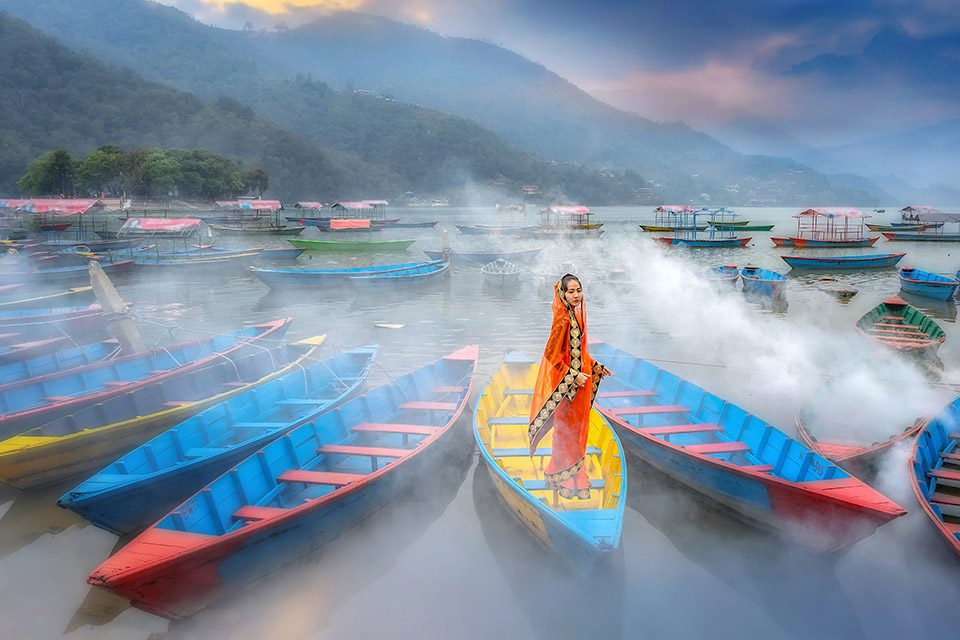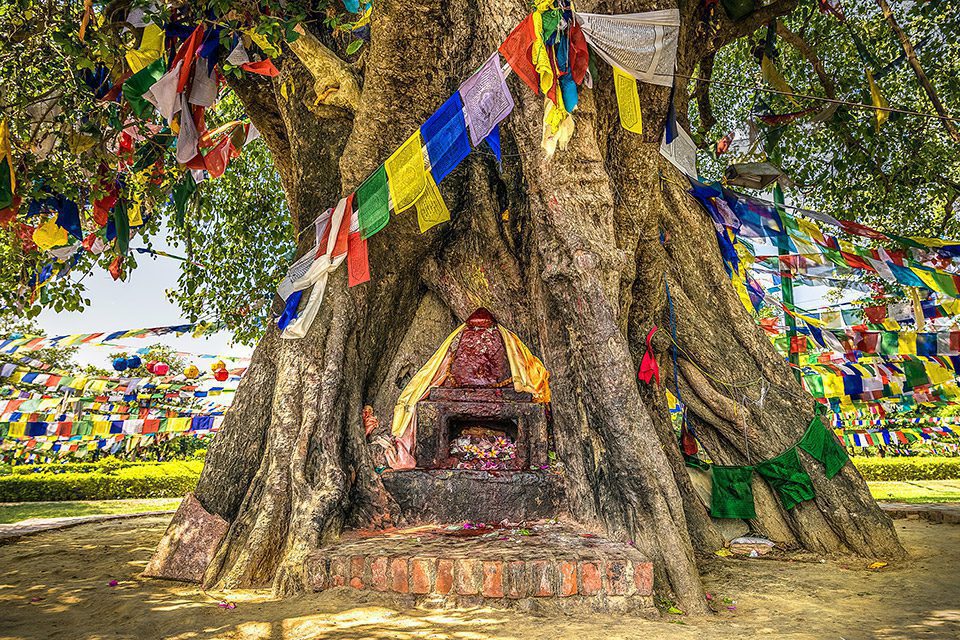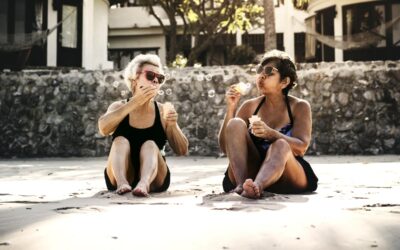Last updated on January 1st, 2024
Featured Image: Finding healing in Nepal | Photo by stveak on Adobe Stock
A story of meditation and healing in Nepal
by Amanda Burgess
In fall 2014, Meaghan K. was living in South Korea, where she’d been teaching English for seven years. She was wrapped up in a long-distance relationship with a man from Germany, and her world tilted on its axis when he broke up with her.
Lost, heartbroken, she was trying to stay grounded through her yoga practice. On a night out celebrating American Thanksgiving with friends, she drowned her sorrows, then tripped and fell on her face. She broke her jaw, which had to be wired shut. It was a wake-up call.
“When it happened, I was like – Whoa, I’m alive. I’m so happy to be alive. I’m going to make the best of this,” she says. “It realigned me with what I wanted to do, which was to no longer teach English and to refocus on my health.”
A friend of hers had recently travelled between Nepal and India by motorcycle and urged her to visit Pokhara in Nepal. He’d noticed the difference in the way his female travelling companion was treated in both countries and found Nepal to be the safer of the two for a woman travelling solo.
Her instinct was to ground, to meditate. She made her way to Nepal via Thailand, where she spent two months learning Thai massage. Soon after arriving in Pokhara, she met a yoga teacher who told her about a hostel called The Lonely View. Meaghan moved in that day. After a week, her new friend convinced her to join a group on a base camp trek.
A week before the planned trek, on April 25, 2015, an earthquake rocked Nepal.
“I was in a little café with two guys from New Zealand and Holland. People were screaming and running out into the streets. One of the guys stands up and says: Let’s walk – carefully, no running,” she says. “The ground was moving and I’m standing on this road just waiting for the ground to split and wondering which side I’m going to jump on.”
That harrowing experience dissolved any remaining desire Meaghan had to keep pushing herself. She could hike Everest another time. What she needed and wanted to do was heal from the accident and mend her broken heart.
“I realized that I was exactly where I needed to be. I found a healer to work with, started doing yoga with her, and she also taught me a 21-day self-healing meditation, which was incredible,” Meaghan says. “Every three days, I would meet with her and she would channel a different mudra to use as I focused on moving the energy.”
She settled into a rhythm based on the rising and setting of the sun. Since Nepal sells energy to India, it’s often without power, and Meaghan’s hostel had no internet connection. When it got dark, she went to bed. She’d wake up with the sunrise, make coffee, go for a walk, have breakfast, and then head to a nearby market to pick up supplies.
“Like clockwork, because it was monsoon season, I’d get back to the hostel and it would start pouring, so I would do my two-hour meditation with a huge storm coming through,” she says. “It was so powerful. And since I was there during the earthquake, the energy was so vibrant. You could feel the hum of the earth.”
When Meaghan first decided to travel to Nepal, her plan was to do a vipassana – a Buddhist, self-exploratory form of meditation that is focused on the deep interconnection between the mind and body through disciplined attention to physical sensations. She’d signed up for a 10-day session in Lumbini, the birthplace of the Buddha.
She left Pokhara for Lumbini and was surprised to discover that she was the only woman participating in the session. This was so far out of the ordinary for the centre she was practicing at that it sent the volunteers scrambling to ensure she was okay.
A holy tree with a Buddhist Temple and flags in Lumbini, Nepal / Photo credit: Sergio de Flore on Adobe Stock
“They were asking me: Is everything okay? And I’m thinking, this is a silent retreat. Why are you talking to me? Then I get this note that asks me if I have enough feminine hygiene products. I’m thinking, yes – I’m a grown-ass woman. Why are you passing notes and talking to me?” Meaghan recalls. “I had the luxury of having the whole female area to myself until the fourth day. I felt like a queen.”
That day, another woman showed up, one who simply sat and watched her. It wasn’t until the last day of her practice that Meaghan discovered the woman was passing through with another group on earthquake relief duty. The centre begged her to stay as a companion to Meaghan.
“From the experience, I learned that I can spend time with myself and everything will be okay. I don’t need any distractions,” she says. “I have the capacity to heal. I have the strength to heal. And now I have the know-how to transform the energy coming into my field. Sometimes, we get stuck and it gets stuck. But we can convert it back to its essence so it can be returned to earth and used again.”
After Nepal, Meaghan travelled through Greece, made a pitstop in Germany for closure with her ex-boyfriend and made her way back to Canada to start a new career in Thai massage. She’d realized that teaching wasn’t her passion anymore. Over seven years in Korea, she’d witnessed the Korean culture of sharing the gift of massage and touch with each other – something she didn’t have a lot of growing up – and wanted to bring that back with her to Canada. She would later add traditional Chinese medicine and acupuncture to her healing repertoire.
Five years on, Meaghan has so much she’d like to say to the girl she was in body and heart at the start of her own healing journey. “Don’t hesitate. You can’t put a value on your health and wellbeing. Whatever you invest in yourself will always come back to you,” she says. “In Nepal, I was surrounded by such intense energy and I felt like I was a sponge absorbing it all. Now I carry that resonance forward in my work and in the treatments that I give to other people – that capacity for healing.”
Read More on Transformational Travel
Cactus Cocktails and Low-emission Coffee? What We Can Learn From the Caribbean Island of Bonaire
From cactus cocktails to low-emission cups of coffee, the Caribbean island of Bonaire, population 22,500, is a leader in sustainability, with lessons to teach about the transformative impact of travel.
What My Epic Road Trip Across Southern Africa Taught Me
A road trip across the wilds of Southern Africa helps draw attention to the small things that might have been taken for granted in the past.
JourneyWoman Webinar Series: Wellness and Transformational Travel on March 12
Join our March 12 webinar to learn more about transformational travel from experts in the JourneyWoman Women’s Travel Directory.








0 Comments
We always strive to use real photos from our own adventures, provided by the guest writer or from our personal travels. However, in some cases, due to photo quality, we must use stock photography. If you have any questions about the photography please let us know.
Disclaimer: We are so happy that you are checking out this page right now! We only recommend things that are suggested by our community, or through our own experience, that we believe will be helpful and practical for you. Some of our pages contain links, which means we’re part of an affiliate program for the product being mentioned. Should you decide to purchase a product using a link from on our site, JourneyWoman may earn a small commission from the retailer, which helps us maintain our beautiful website. JourneyWoman is an Amazon Associate and earns from qualifying purchases. Thank you!
We want to hear what you think about this article, and we welcome any updates or changes to improve it. You can comment below, or send an email to us at [email protected].